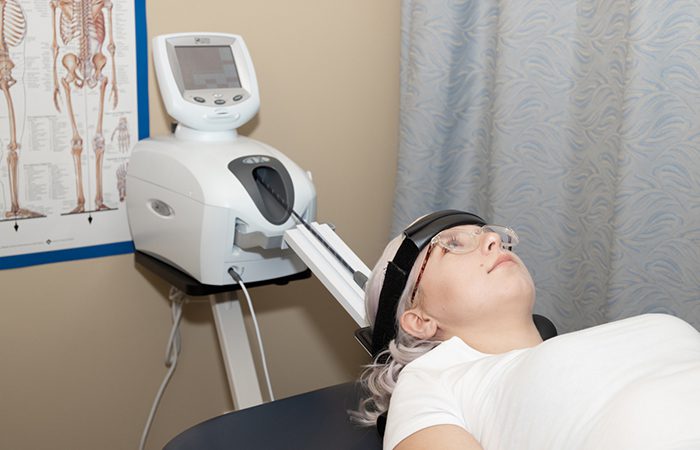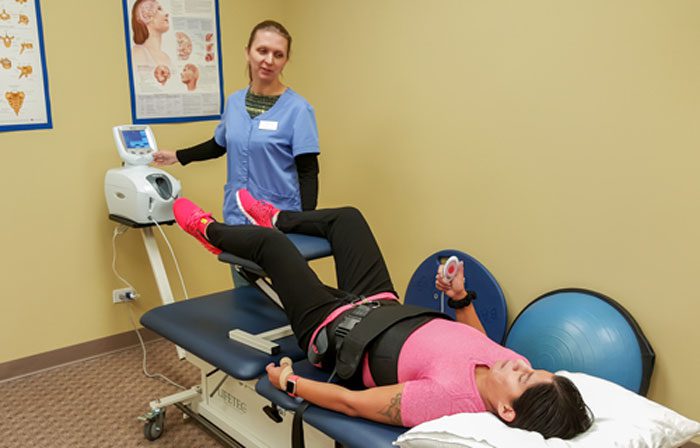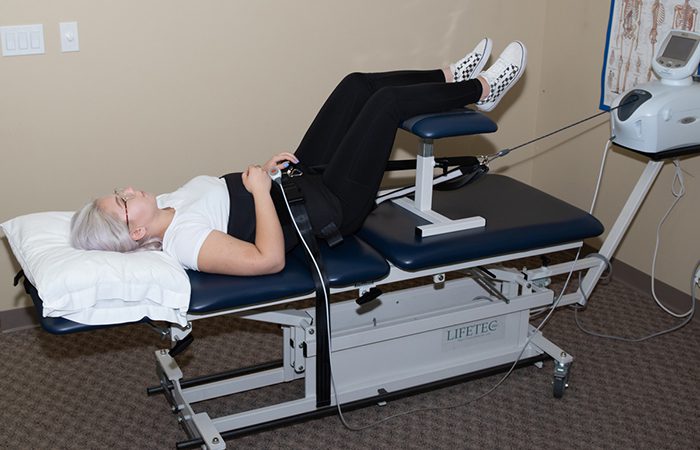Spinal Decompression Therapy
What is Nonsurgical Spinal Decompression?
More and more patients suffering long-term pain of neck or back symptoms in the quest to regain their functionality and better quality of life turn to nonsurgical alternatives, particularly spinal decompression therapy, known as traction.
Nonsurgical Spinal Decompression is achieved by applying motorized traction to gently expand the spinal column. This stretching removes the pressure off the spinal disks, removing the abnormal and pain-causing pressure on nearby nerves and other spinal structures, which may in turn affect other parts of the body. With the pressure relieved, the disks may also finally receive the ample supply of oxygen, water, and other nutrients essential for their healing and proper functioning. This, along with the obvious relief from pain associated with disk pathologies, is the main objective of the Nonsurgical Spinal Decompression.
INDICATIONS FOR TRACTION
- Back or neck pain
- Bulging or herniated discs or degenerative disc disease
- Sciatica and radicular symptoms in legs or arms
- Worn spinal joints (called posterior facet syndrome)
- Injured or diseased spinal nerve roots
CONTRAINDICATIONS
In any instance when the structural integrity of the spine is compromised as if in case of infection, tumor, osteoporosis, cervical rheumatoid arthritis, etc. any form of traction is not advisable. Additionally, there are physical conditions counter-indicative or mechanical decompression, such as hernias, some cases of TMJ, pregnancy, or cardiovascular disease.




HOW THE TREATMENT LOOK LIKE?
During the therapy session, the patient remains fully clothed, laying on the back, and attached to a computerized therapy table. The therapist presents the specific functional characteristics of the traction, customizing them to the patient’s specific needs, always ensuring their level of comfort. The treatment may take on average from 10 to 30 minutes and maybe applied during multiple sessions. The patient should experience no pain either during or post-therapy and the sensation of being stretched in the spine is normal and desired. The objective of decompressing traction is to minimize the pain and enhance its functionality. The process is designed to be relaxing, without any additional ill effects. For that reason, the initial session typically begins with lesser force or weight being applied, allowing the therapist to closely observe and respond to cues from patients relating to their tolerance levels and comfort.
To intensify the spinal decompression effectiveness, other therapies or treatments may also be applied before or after the traction therapy, such as:
- Electrical stimulation (electric current that causes certain muscles to contract)
- Ultrasound (the use of sound waves to generate heat and promote healing)
- Heat or cold therapy
- Manual therapy
- Therapeutic exercises


